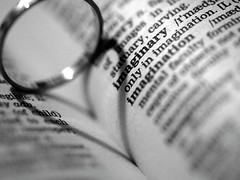
image courtesy Edward Tufte
As sunlight passes through the crown of a tree, every small opening in the crown serves as the aperture of a pinhole camera that casts an image of the sun on the ground. These sun images vary in size and brightness and may overlap, forming shadows of intricate detail and rich intensity gradations.
Artists call this dappled light. As the sun makes its way across the sky, the shapes change relatively quickly (a property of the moiré phenomenon).
If we could carefully design a tree-shaped sculpture with precisely positioned twigs and leaves, we could make a sundial that marks the passage of times and seasons by casting intricately detailed transient shadow images. For example, a tree sculpture installation that casts shadow portraits of persons whose birthday it is on that day — every day of the year, at a specific time.





